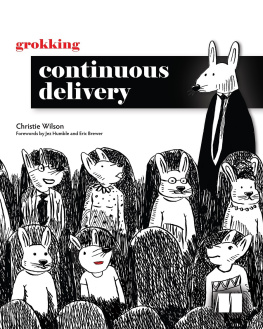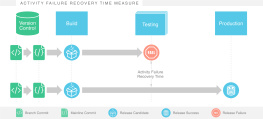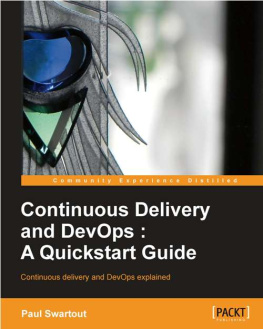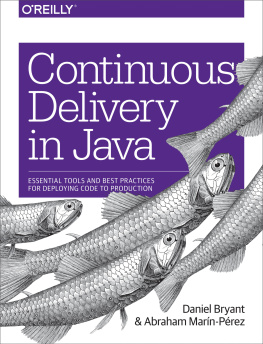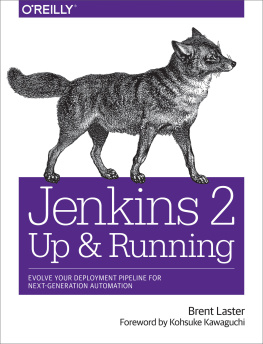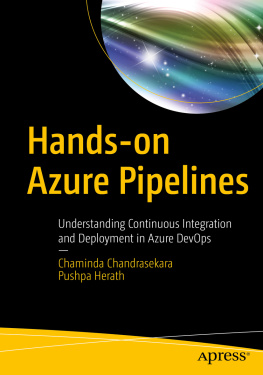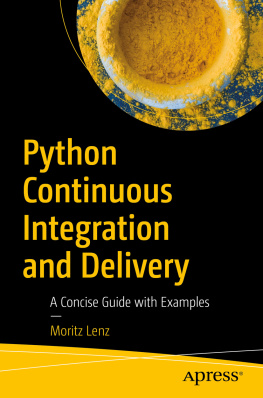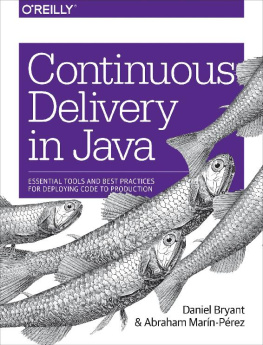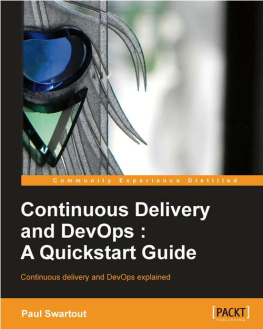inside front cover
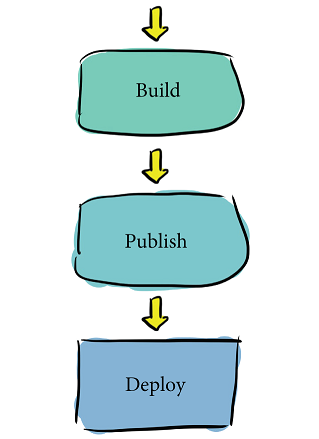
Prototypical release pipeline

Grokking Continuous Delivery
Christie Wilson
To comment go to liveBook

Manning
Shelter Island
For more information on this and other Manning titles go to
www.manning.com
Copyright
For online information and ordering of these and other Manning books, please visit www.manning.com. The publisher offers discounts on these books when ordered in quantity.
For more information, please contact
Special Sales Department
Manning Publications Co.
20 Baldwin Road
PO Box 761
Shelter Island, NY 11964
Email: orders@manning.com
2022 by Manning Publications Co. All rights reserved.
No part of this publication may be reproduced, stored in a retrieval system, or transmitted, in any form or by means electronic, mechanical, photocopying, or otherwise, without prior written permission of the publisher.
Many of the designations used by manufacturers and sellers to distinguish their products are claimed as trademarks. Where those designations appear in the book, and Manning Publications was aware of a trademark claim, the designations have been printed in initial caps or all caps.
Recognizing the importance of preserving what has been written, it is Mannings policy to have the books we publish printed on acid-free paper, and we exert our best efforts to that end. Recognizing also our responsibility to conserve the resources of our planet, Manning books are printed on paper that is at least 15 percent recycled and processed without the use of elemental chlorine.

| Manning Publications Co. 20 Baldwin Road Technical PO Box 761 Shelter Island, NY 11964 |
Development editor: | Ian Hough |
Technical development editor: | Mark Elston |
Review editor: | Aleksandar Dragosavljevi |
Production editor: | Kathleen Rossland |
Copy editor: | Sharon Wilkey |
Proofreader: | Keri Hales |
Technical proofreader: | Ninoslav Cerkez |
Typesetter: | Dennis Dalinnik |
Cover designer: | Leslie Hames |
ISBN: 9781617298257
dedication
To my daughter, Alexandra, my most important delivery to date!
front matter
forewords
When David Farley and I wrote Continuous Delivery: Reliable Software Releases through Build, Test, and Deployment Automation (Addison-Wesley, 2010), we knew, from years of applying the principles described in the book, that it represented a modern, holistic approach to software delivery that brought substantial benefits to teams and organizations who used it. Multiple research programs (including the one I have been involved in, led by Dr. Nicole Forsgren and described in chapters 8 and 10 of this book) have shown that it leads to higher quality and stability, as well as faster delivery.
Although continuous integration and continuous delivery (often shortened to CI/CD) are now thought of as standard practice, they are still surprisingly hard to implement and get right. There are still too many teams (and customers!) that deal with infrequent, risky releases that happen over evenings or weekends, planned and unplanned downtime, rollbacks, and problems with performance, availability, and security. These are all avoidable problems, but solving them requires ongoing investment in teams, tooling, and organizational culture.
Crucially, many people who are new to the industry arent familiar with the fundamental practices and how to implement them. This book does an outstanding job of addressing this problem. Christie Wilson, an expert in continuous delivery who leads the open source Tekton CI/CD project at Google, has written a comprehensive, clear, and thorough book that details both the technology and process sides of implementing a modern software delivery process. She not only covers the principles and the implementation, but also shows why they are important, and provides a step-by-step guide to the hardest problems with which I see teams struggle such as taking an iterative approach to feature development and handling legacy codebases.
I hope this book finds a place in every software teams onboarding list as a primer. It will also prove invaluable as a detailed guide for more experienced software engineers adopting a way of working theyre not familiar with. I am grateful to Christie for creating a resource that I am confident will drive a better understanding of how to implement a modern software delivery process to the benefit of both the industry and the wider public we serve.
Jez Humble
co-author of Continuous Delivery,
The DevOps Handbook, and Accelerate
The beauty of software is that everything can be improved over time. But it is also the curse of softwarebecause we can change things, we do, essentially all the time. The relentless pressure for new features or other improvements leads to a desire for some kind of high-velocity process for integrating changes, testing them, and getting them out to users.
Christie Wilson has lived this process and watched it from many angles, and created a book about how to get consistent velocity for your software teams. Indeed a team that can achieve a high-velocity process, with lots of automation, has a competitive advantage for their products. Over time, these teams not only gain market share, but they also have higher morale and lower attrition. It is great to be part of a productive team!
A common misconception is that lower-velocity processes, presumably with more barriers to deployment, are safer or more secure. Many teams are averse to change and thus release changes once a quarter, for example. This approach has two serious flaws. First, it typically moves the difficult task of integrating many changes towards the end, but with so many changes to integrate since the last release, it can go horribly wrong and cause large delays. Second, a slow process prevents fast security patches, a critical goal for most teams. The approach described in this book is all about continuous (small) integrations, enabling both fast feedback on problems, and a viable mechanism for security patches.
In the past few years, security challenges have increased dramatically, especially around supply chain attacks. Modern software includes components from many placesother teams, other companies, and open source software. It is not crazy to have 1,000 components that need to be integrated together. This requires a different level of automation: we need to know all of the inputs and where they came from, and how they were used together. Christies book is one of the first to cover these issues and outline how to add this kind of security to your systems.
Finally, although there are a huge number of tools and options in this space, this book does a great job of covering the key concepts and goals, while also making it real through both examples and discussion of alternatives.

